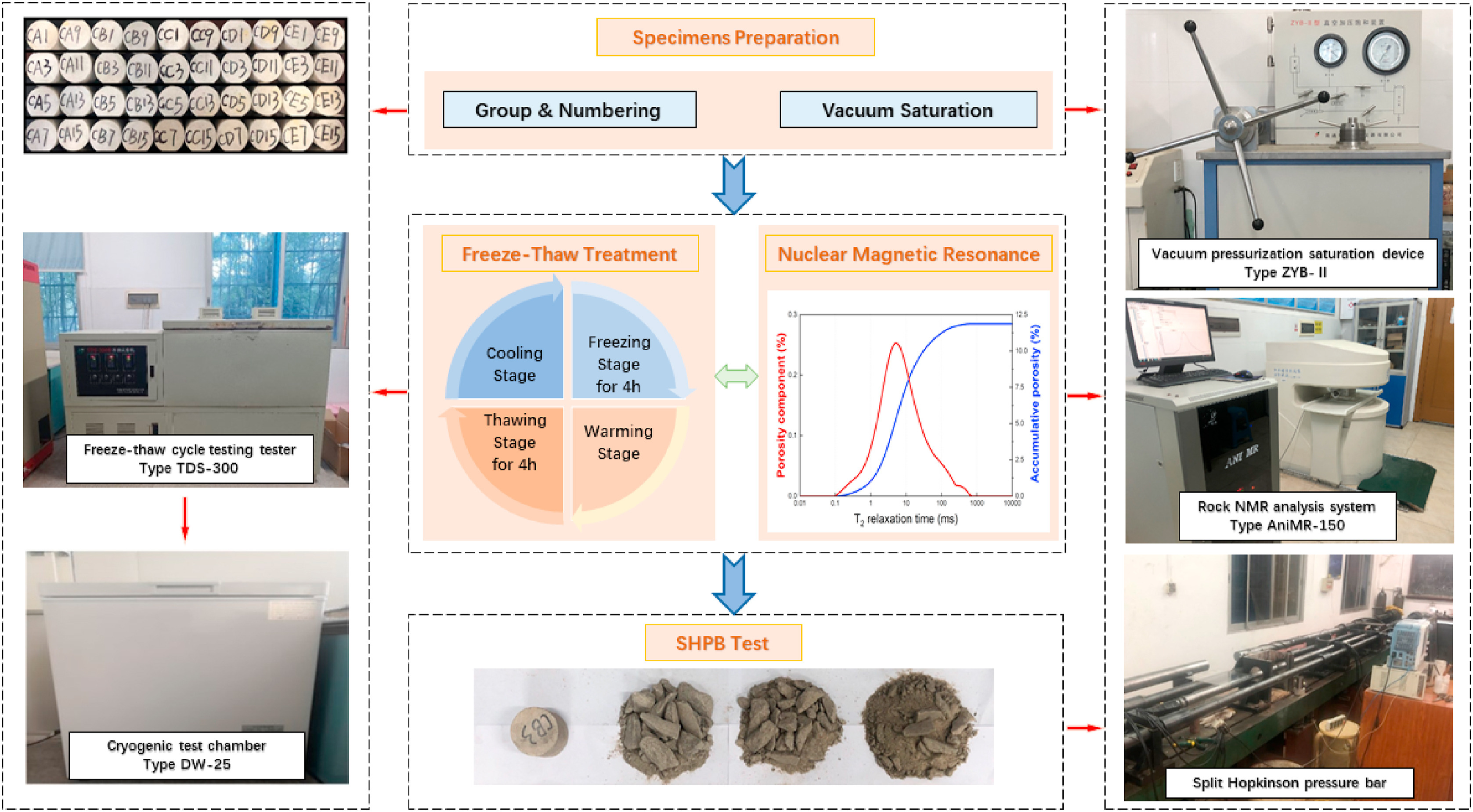JRMGE / Vol 15 / Issue 6
Dynamic behaviors of water-saturated and frozen sandstone subjected to freeze-thaw cycles
Feng Gao, Cong Li, Xin Xiong, Yanan Zhang, Keping Zhou
Show More
a School of Resources and Safety Engineering, Central South University, Changsha, 410083, China
b Research Center for Mining Engineering and Technology in Cold Regions, Central South University, Changsha, 410083, China
c Department of Aerospace and Mechanical Engineering, The University of Arizona, Tucson, AZ, 85721, USA
2023, 15(6): 1476-1490. doi:10.1016/j.jrmge.2022.11.007
Received: 2022-06-15 / Revised: 2022-10-06 / Accepted: 2022-11-14 / Available online: 2022-12-10
2023, 15(6): 1476-1490.
doi:10.1016/j.jrmge.2022.11.007
Received: 2022-06-15
Revised: 2022-10-06
Accepted: 2022-11-14
Available online: 2022-12-10
In high-altitude cold areas, freeze-thaw (F-T) cycles induced by day-night and seasonal temperature changes cause numerous rock mass slope engineering disasters. To investigate the dynamic properties of rock in the natural environment of a high-altitude cold area, standard specimens were drilled from the slope of the Jiama copper mine in Tibet, and dynamic compression tests were performed on water-saturated and frozen sandstone with different numbers of F-T cycles (0, 10, 20, 30, and 40) by the split Hopkinson pressure bar (SHPB) system with a cryogenic control system. The influence of water-saturated and frozen conditions on the dynamic performance of sandstone was investigated. The following conclusions are drawn: (1) With increasing strain rate, the attenuation factor (λa) of water-saturated sandstone and the intensifying factor (λi) of frozen sandstone linearly increase. As the number of F-T cycles increases, the dependence factor (λd) of water-saturated sandstone linearly decreases, whereas the λd of frozen sandstone linearly increases. (2) The prediction equation of the dynamic compressive strength of water-saturated and frozen sandstone is obtained, which can be used to predict the dynamic compressive strength of sandstone after various F-T cycles based on the strain rate. (3) The mesoscopic mechanism of water-saturated and frozen sandstone's dynamic compressive strength evolution is investigated. The water softening effect causes the dynamic compressive strength of water-saturated sandstone to decrease, whereas the strengthening effect of pore ice causes it to increase. (4) The decrease in the relative dynamic compressive strength of water-saturated sandstone and the increase in the relative dynamic compressive strength of frozen sandstone can be attributed to the increased porosity.
Keywords: Freeze-thaw (F-T) cycle damage, Dynamic properties, Split Hopkinson pressure bar (SHPB), Increasing rate of porosity
Article Data
Author(s) Information
Xin Xiong

Xin Xiong obtained his BSc degree in Mining Engineering from Northeastern University, Shenyang, China, in 2016, and his MSc degree in Mining Engineering from Central South University, Changsha, China, in 2019. Now, he is a PhD candidate in Mining Engineering at Central South University. His research interests include (1) Mining method and technology of metal mine, (2) Freeze-thaw rock mechanics, and (3) Constitutive model of rock subjected to multi-field coupling. Up to now, he has published 8 papers as the first author or corresponding author, and hold 9 patents as the second or third inventor.

